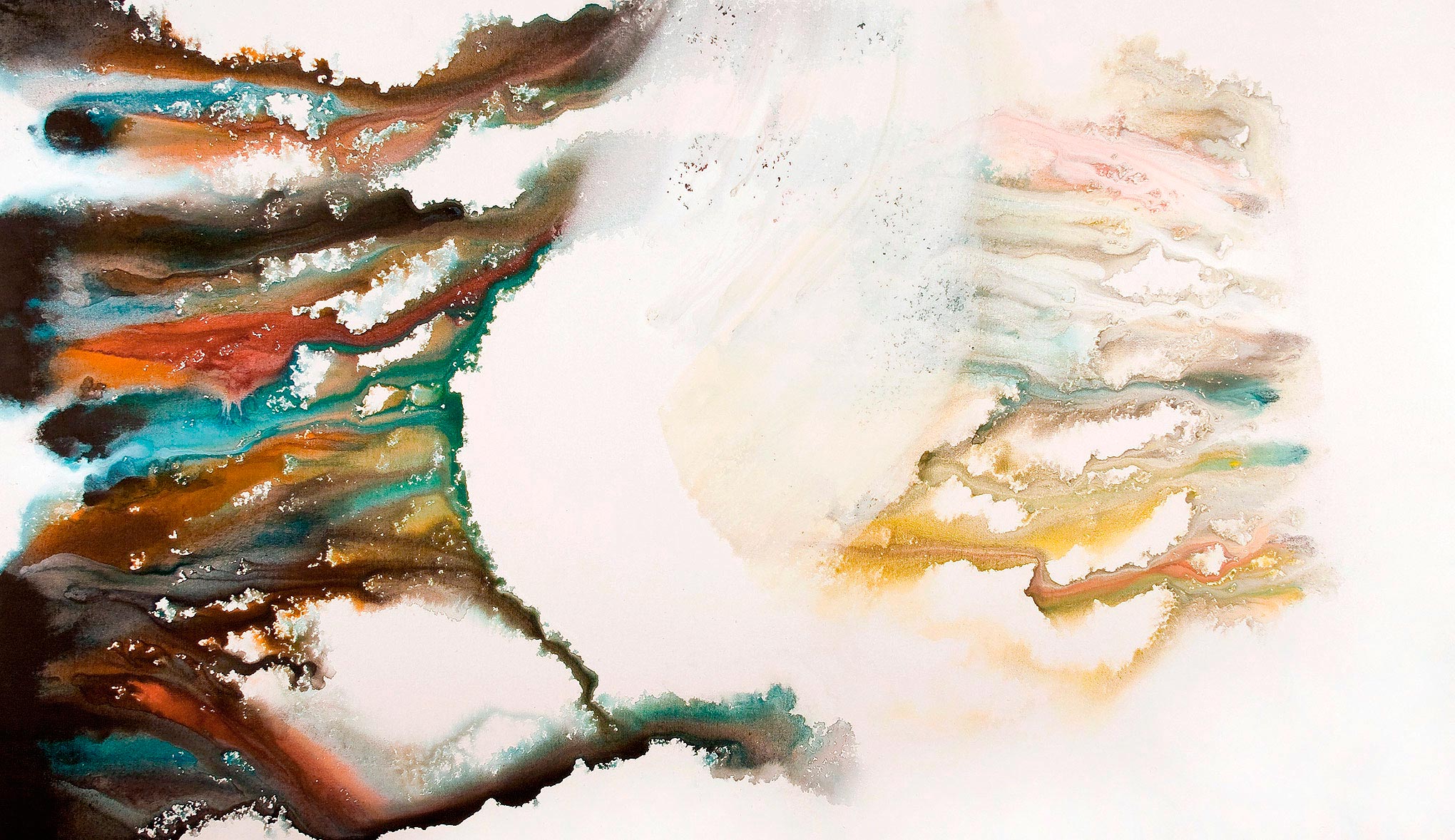Manoel Veiga
by Clarissa Diniz
(translated from Portuguese by Beatriz Viégas-Faria)
Published in the catalogue of the solo exhibition at the Dumaresq Art Gallery, Recife PE, 2009.
Traditionally, an oil painting is created through the mechanical manipulation of its tools and supports (brushes, spatulas, canvases) and therefore it is usually associated with the impetuous and physical gesture that produces it: its author. This notion of painting – inspired by the idea of a demiurge/artist who would have complete control of the material s/he handles – benefits from the notion of subjectivity as an identitary character, thus comprising, in the arts, a realm that has been historically taken as antagonistic to that of the sciences, the alleged scenery for objectivity. Manoel Veiga, however, has been challenging this art vs. science duopoly when he brings to his productive method in art a procedure that apparently resembles the foundations of modern science: “separating” the observer from the observed system. With this intention, the artist established a creative process in which his authorial sovereignty is restrained, given that it comprises the will, so to speak, of the matter and nature he handles: “beings” that dominate us while we do not perceive their phallic presence. Veiga declares, through his painting, that it is necessary that we recognize such “beings” as objective forces that are in our lives and relate to us via either symbiosis or parasitism or else mutual exploitation; moreover, they do have powers of self-organization and reproduction that obey principles we ignore. Both recognizing their powers and capitalizing on it – the basis of Veiga’s painting – brings about a work of abstract and multiple authorship. Devoid of brush strokes, his painting is structured with the action of forces and principles that, once the artist learned they are uncontrollable, he does not wish to tame them entirely, but rather to exploit them (as we can see in the geometrizing detours and curbs that more recently have come to inhabit his work). And so we have Veiga’s painting constructing itself like the movements one perceives by looking at a river or, better yet, by observing what happens in a cup of hot white milk at that exact moment when a bit of black coffee is poured in. And so it is: no matter how much the artist’s action in his struggle with matter results in the creation of “atmospheres,” and there is this consequent hinting at states of perception, no metaphor is developed, no signification can be derived. Staying away from the contents and expressions that are based on the signifier/signified linguistic model, Veiga’s work alludes to the idea of diagram, one which disregards meanings and the distinction between natural and artificial, therefore being ruled only by functions and matters. They cease to be important, the meanings that are adjunct to the movement (content, for instance), or else the status of the work’s original drive (whether mechanical, artificial, etc), for it is in itself the space/flow of existence – with its incisiveness and its seductiveness) that guides both the painting and the eye of the observer. From yet another perspective, it can be said of Manoel Veiga’s painting (in its aspiration, not 100% subject and not 100% object) that it also alludes to indetermination, probability, and subjectivity as viewed in science and its experimental-control models – problemizing the modern utopia of an impassible science, free of vulnerabilities. Whatever the viewpoint, compliments are paid to the existential porosity, an appetite for fusion that, being libidinous, omits beings, things, thoughts, and disciplines. By taking pleasure from the conjunction instead of insisting on a disjunctive world model (subject vs. object), Veiga’s painting finds in itself its own subject, following a metalinguistic procedure according to which – for some years now – his own work (a system) is both his theme and procedure. Given that Manoel Veiga is an engineer, as a scientist he took to himself the responsibility of taking into consideration – in his artistic work as well – not just an epistemology of the observed systems, but also an epistemology of the observers. It is for this reason that he does not represent any specific struggle, but rather he struggles against, in favor of, and within himself.
Diniz, Veiga, Monod, Deleuze, Basbaum, Morin, von Foerster, the matter, the ideas, the sound and the smell of the falling rain.

